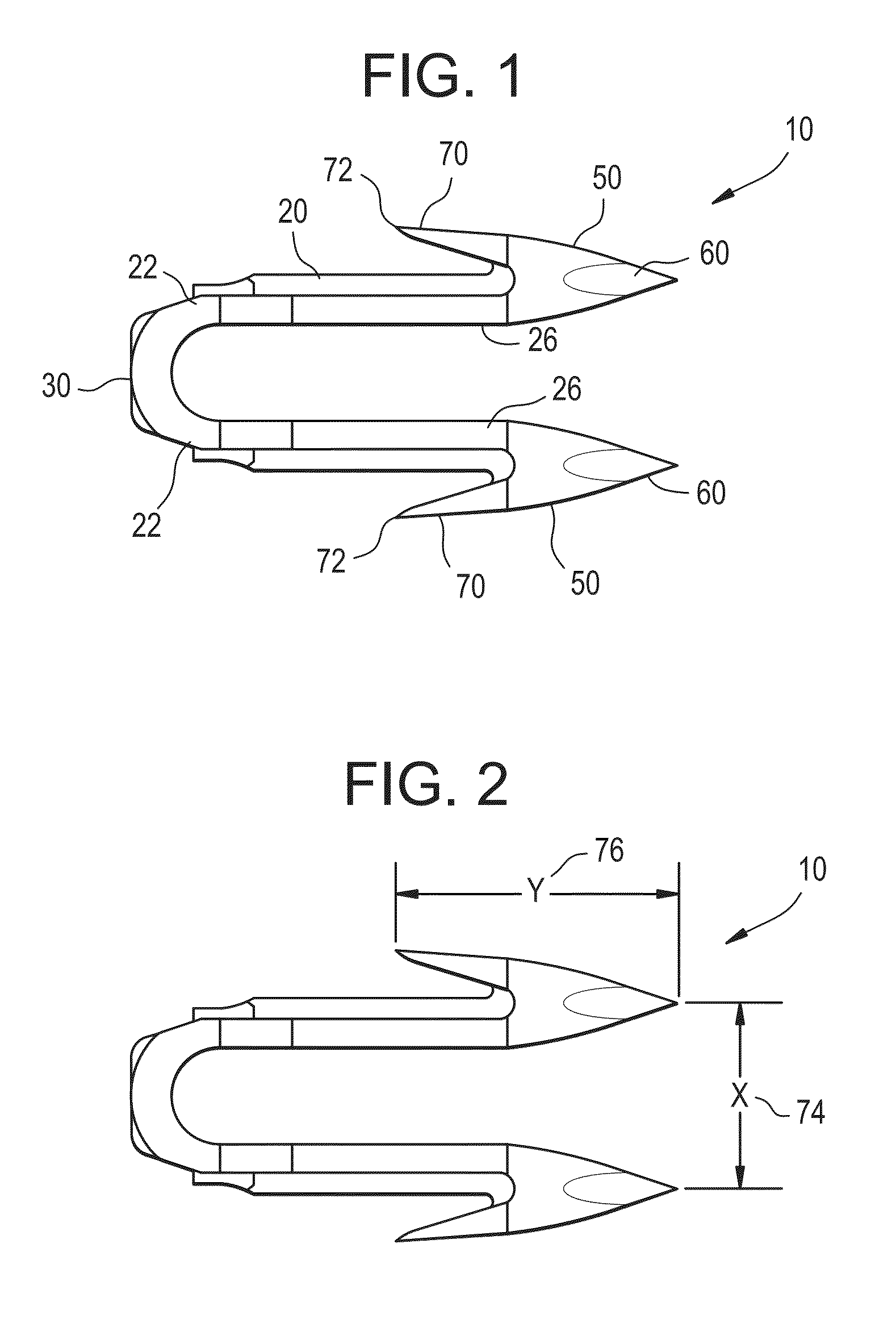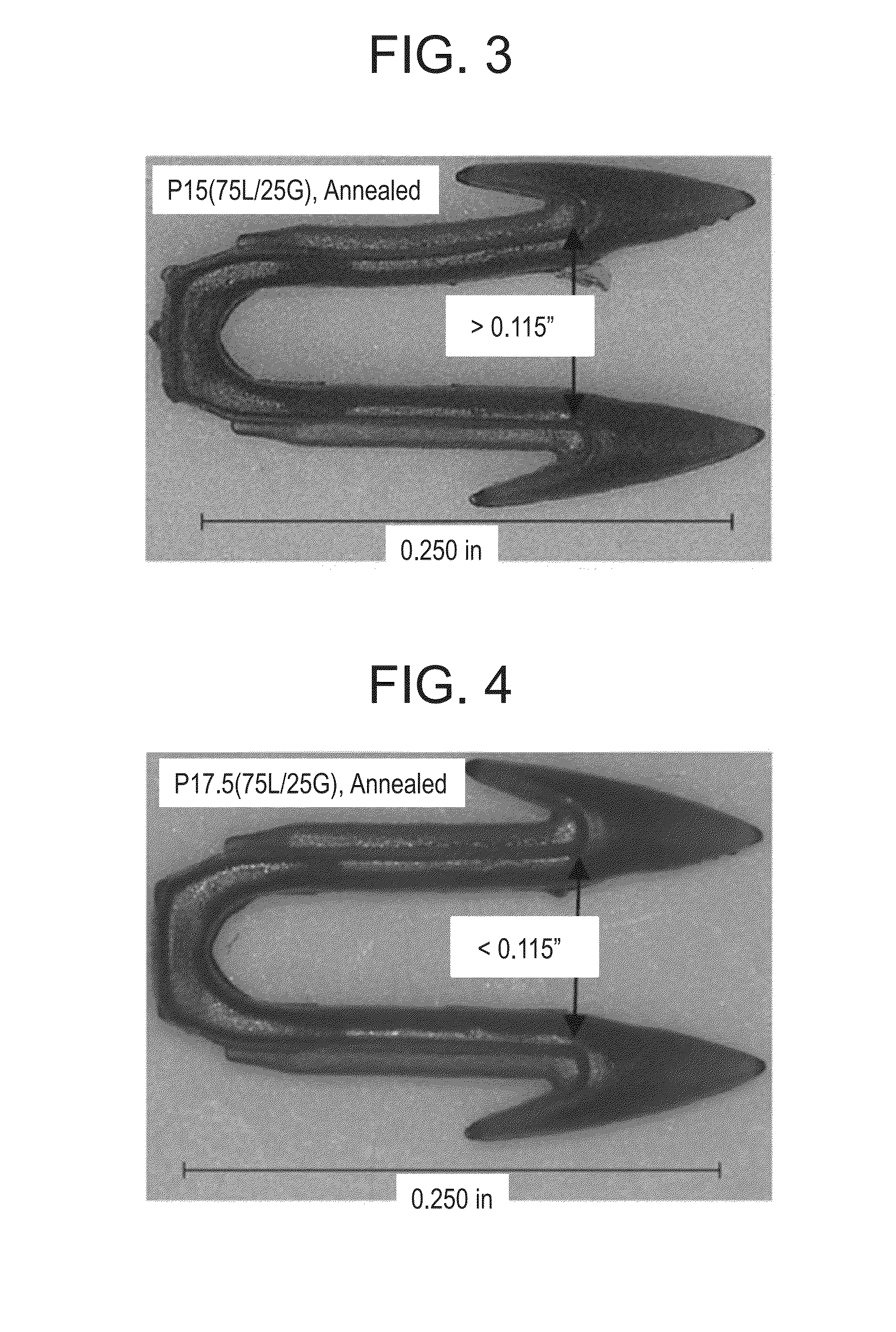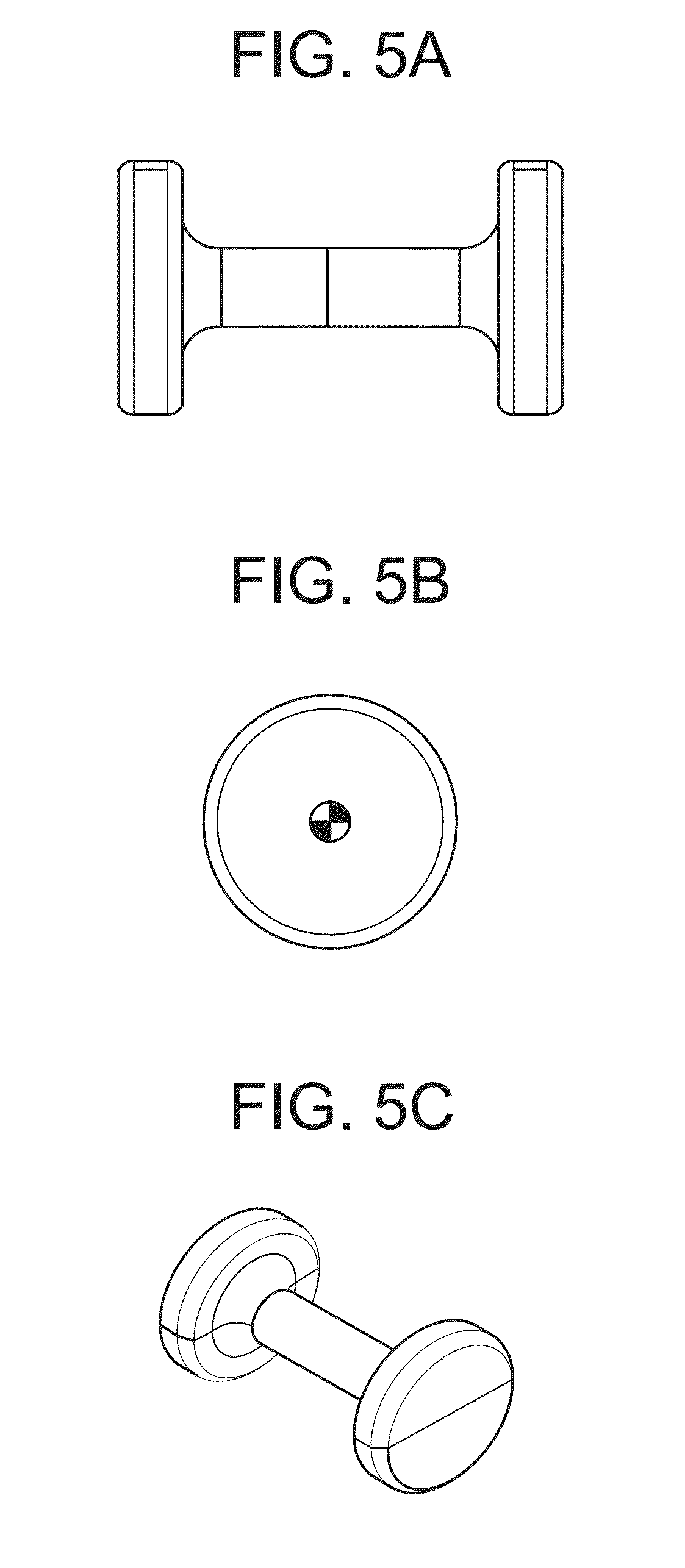Absorbable polymeric blend compositions based on copolymers prepared from mono- and di-functional polymerization initiators, processing methods, and medical devices therefrom
a polymer and polymerization initiator technology, applied in the field of absorbable polymer blends, can solve the problems of inability to completely eliminate residual stress in injection molded parts, and inferior properties of molded parts, etc., and achieve the effect of providing dimensional stability to a manufactured articl
- Summary
- Abstract
- Description
- Claims
- Application Information
AI Technical Summary
Benefits of technology
Problems solved by technology
Method used
Image
Examples
example 1
Synthesis of 85 / 15 Poly(L(−)-Lactide-co-Glycolide): Polymer of Normal Molecular Weight Distribution
[0105]Into a suitable, conventional 15-gallon stainless steel oil-jacketed reactor equipped with agitation, 43.778 kg of L(−)-lactide and 6.222 kg of glycolide were added along with 121.07 g of dodecanol and 9.02 mL of a 0.33M solution of stannous octoate in toluene. The reactor was closed and a purging cycle, along with agitation at a rotational speed of 12 RPM in an upward direction, was initiated. The reactor was evacuated to pressures less than 200 mTorr followed by the introduction of nitrogen gas to a pressure slightly in excess of one atmosphere. The cycle was repeated several times to ensure a dry atmosphere.
[0106]At the end of the final introduction of nitrogen, the pressure was adjusted to be slightly above one atmosphere. The vessel was heated at a rate of 180° C. per hour until the oil temperature reached approximately 130° C. The vessel was held at 130° C. until the monome...
example 2
Synthesis of Poly(p-Dioxanone): Standard Molecular Weight Polymer
[0111]Into a suitable, conventional 65-gallon stainless steel oil-jacketed reactor equipped with agitation, 164.2 kg of p-dioxanone monomer (PDO) was added along with 509 grams of dodecanol, 164 grams of D&C Violet No. 2 Dye, and 100 grams of a 0.33M solution of stannous octoate in toluene. The reactor was closed and a purging cycle, along with agitation at a rotational speed of 12 RPM in an upward direction, was initiated. The reactor was evacuated to pressures less than 500 mTorr followed by the introduction of nitrogen gas. The cycle was repeated several times to ensure a dry atmosphere.
[0112]At the end of the final introduction of nitrogen, the pressure was adjusted to be slightly above one atmosphere. The vessel was heated at a rate of 180° C. per hour until the oil temperature reached approximately 100° C. The oil temperature was held at 100° C. until the batch temperature reached 50° C., at which point the agita...
example 3
Synthesis of Block 92 / 8 PDO / Gly Copolymer Used in the Present Invention
[0116]A series of PDO / Gly block copolymers were prepared by ring-opening polymerization in a clean, dry, stainless steel, oil-heated, conventional jacketed reactor equipped with a mechanical agitator using stannous octoate (total Tin 29% w / w) at a monomer-to-catalyst mole ratio of 30,000:1, utilizing 50:50 mole ratios of mono-functional initiator, dodecanol (DD), to a difunctional initiator, diethylene glycol (DEG). The monomer-to-total initiator ratio value determines the final molecular weight of the copolymer. Two 92 / 8 PDO / Gly copolymers will be described: a) Example 3A, with a monomer-to-total initiator ratio of 825:1, and, b) Example 3B, with a monomer-to-total initiator ratio of 900:1.
[0117]The polymerization process used in preparation of the PDO / Gly copolymers was a two-step polymerization comprising a first stage homopolymerization using 100% p-dioxanone and a second stage block copolymerization with an ...
PUM
| Property | Measurement | Unit |
|---|---|---|
| Percent by mass | aaaaa | aaaaa |
| Weight | aaaaa | aaaaa |
| Bioabsorbable | aaaaa | aaaaa |
Abstract
Description
Claims
Application Information
 Login to View More
Login to View More - R&D
- Intellectual Property
- Life Sciences
- Materials
- Tech Scout
- Unparalleled Data Quality
- Higher Quality Content
- 60% Fewer Hallucinations
Browse by: Latest US Patents, China's latest patents, Technical Efficacy Thesaurus, Application Domain, Technology Topic, Popular Technical Reports.
© 2025 PatSnap. All rights reserved.Legal|Privacy policy|Modern Slavery Act Transparency Statement|Sitemap|About US| Contact US: help@patsnap.com



